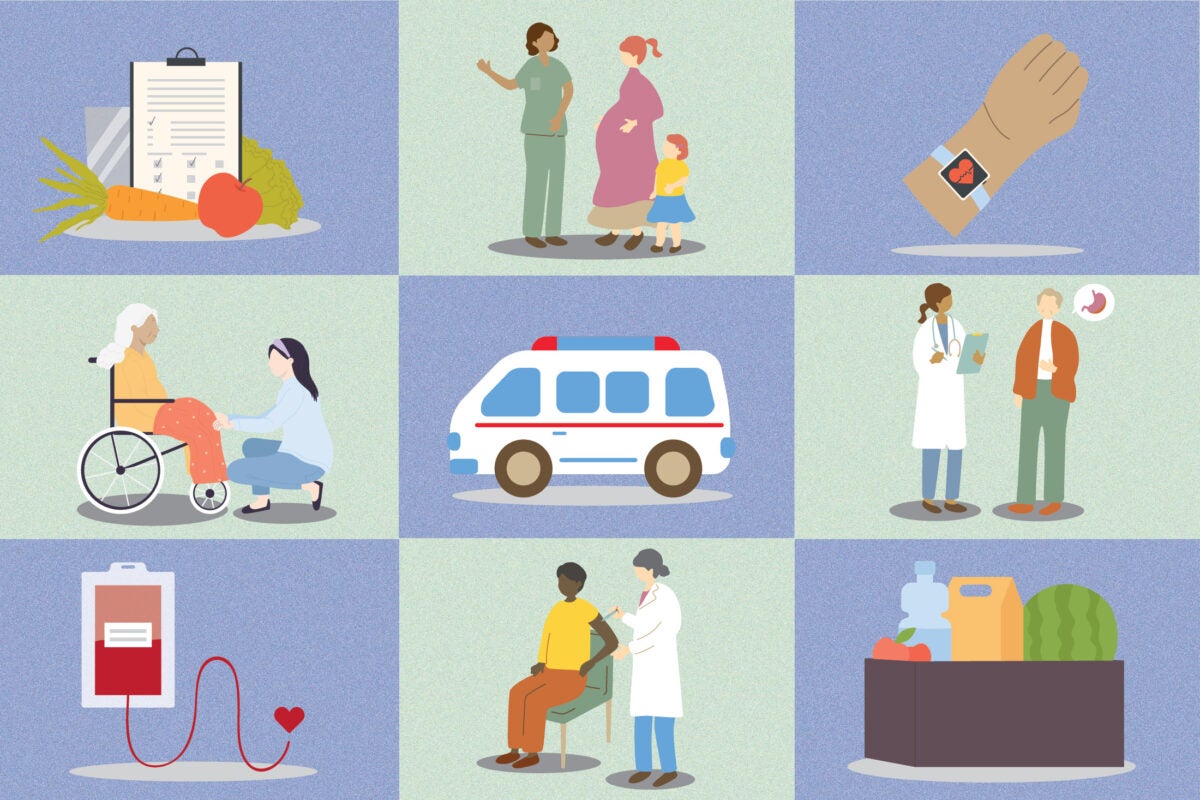
Opinion
Nonprofit hospitals are sitting on $14 billion. Let’s spend it on public health.
When President Biden ends the COVID-19 public health emergency next week, millions will see the costs of COVID-19 testing and treatment go up, and as of April 1st about 15 million individuals are in danger of losing their health insurance through Medicaid entirely.
The public health emergency can’t last forever, but a more permanent solution to filling the health gaps exacerbated by COVID-19 is right in front of us. Hospitals across the country are sitting on unused piles of cash, money they are legally required to use for public benefit. The community benefit program—a little known federal mandate governing nonprofit hospitals—could step into the breach.
Nonprofit hospitals, which represent about 49 percent of America’s hospitals and 57 percent of all community hospitals, pay no taxes. In exchange for this tax break, they are required to invest in improving local community health. Spending under the community program can mean providing medical care, free-of-charge, to the uninsured, partnering with local health departments to reduce opioid overdose deaths, and helping address homelessness in their communities. However, most nonprofit hospitals aren’t spending what they’re required to.
Sign up for Harvard Public Health
Delivered to your inbox weekly.
In fact, some evidence shows that nonprofit hospitals actually spend less on services for uninsured and underinsured patients than for-profit hospitals. The Internal Revenue Service, which oversees the community benefit program, has not revoked a hospital’s tax exempt status for providing insufficient community benefits in the last 10 years even though there is clear evidence that many hospitals have flouted their responsibility. For example, the Cleveland Clinic spent only 1.4% of its total spending on community benefits, an underinvestment of $261 million.
Despite their collective $28 billion tax benefit in 2020, a recent study of more than 1,770 nonprofit hospitals found that 77% were not investing the full value of their tax savings back into their communities—a total underinvestment of $14.2 billion nationwide. This money could cover COVID-19 tests and treatment for the uninsured and could help 18 million Americans erase their medical debt. It could bolster local public health department efforts to improve social determinants of health like employment, education, and safe living conditions—all of which are critical to our overall health.
But to tackle these issues, nonprofit hospitals must actually spend all of their tax savings and be accountable for how they spend it. A 2020 report by the U.S. General Accountability Office recommends clearer definitions of what qualifies as community benefit, and establishing a robust hospital review and auditing process to determine if hospitals are in compliance with community benefit requirements.
Some evidence shows that nonprofit hospitals actually spend less on services for uninsured and underinsured patients than for-profit hospitals.
Public health departments have a role to play, too. Research shows that partnerships between nonprofit hospitals and health departments lead to more hospital spending on the public health needs of the community. And when nonprofit hospitals and health departments work together, they can successfully tackle problems like substance abuse in their communities. In Chautauqua, New York, the Women’s Christian Association Hospital and Chautauqua County Health Department successfully teamed up to reduce the rate of overdose deaths. But despite the benefits of hospital-health department collaboration, 78 percent of local health departments in the U.S. reported little to no collaboration with nonprofit hospitals in assessing community needs and subsequent efforts to address those needs.
Some states are trying to remedy that by requiring nonprofit hospitals to work with their local health departments, appointing community leaders to hospital boards, and setting minimum spending thresholds on public health needs.
For example, New York, Ohio, and Oregon now require nonprofit hospitals to collaborate with local health departments and other community partners in public health assessment and planning.
Community representation on hospital boards is especially important to ensure that hospitals “serve public, rather than private interests.” In Los Angeles, Cedars-Sinai Medical Center successfully recruited a diverse group of community members to join its board of directors in 2008, resulting in better connections with the city’s Korean population, a significant minority group in Los Angeles, and improved ability to identify issues disproportionately affecting them. Bringing community residents onto the hospital board of directors, “helped us understand the challenges that their communities face,” said Cedars-Sinai CEO, Tom Priselac.
Finally, the community benefit regulations can be used to bring down hospital prices, and hold hospitals accountable for predatory medical debt collection practices. Improved oversight and enforcement of existing regulations can go a long way towards ensuring hospitals charge fairly, and avoid predatory practices. A newly implemented federal initiative, the Hospital Price Transparency program, makes hospital pricing more accessible than ever before. While these data can be cumbersome to navigate, there is a real opportunity to hold our community nonprofit hospitals accountable for their responsibility to limit the amount charged for emergency and other medically-necessary care they provide to individuals who qualify for financial assistance.
Nonprofit hospitals are in an excellent position to address the pervasive health inequities in partnership with their local health departments and community groups. Improved oversight and enforcement of their requirement to spend their tax savings for their community’s benefit would be a good start towards closing the health gaps widened by the COVID-19 pandemic.
Source illustrations: FlashVector / iStock and Kid-A / iStock.


